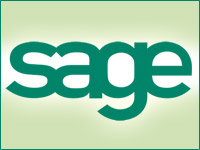
Sage’s Tuesday announcement of its agreement to buy Intacct prompts a multilayered look at the evolution of the cloud enterprise resource planning space. Both companies are partners with Salesforce and have products based on the Salesforce platform. Each is a member of the AppExchange, and both are situated in the broad cloud ERP space, which has been receiving a lot of attention lately as the market seems to be moving en masse, albeit glacially, to the cloud.
Sage, a large supplier to small and mid-sized businesses, offers distinct accounting solutions for some rather specialized markets, such as construction, real estate and manufacturing. The company grew by acquisition over two decades and accumulated a stable of applications that didn’t communicate very well, if at all.
At one point, it offered three CRM products for growing businesses, but those businesses found it hard to migrate as they grew because the data structures were very different. Some even used flat files — perhaps there was one cloud offering. As the company grew its footprint, it also constructed a kind of Tower of Babel. Without a cloud architecture, Sage became less relevant even to the partners that never expected to work in the cloud.
Its business model kept the company from becoming more of a force in the SMB market, because it sold through the indirect channel. Channel partners were thought to be conservative and unwilling to accept changes that could have consolidated the code bases. As a result, the company was a balkanized collection of small fiefdoms, each with a maintenance and development staff, and the totality was hard to manage and fund.
Not the Best of Times
Those were the less-than-good old days, though the company continued to grow. When Stephen Kelly took the helm as CEO a few years ago, things began to change. One of Kelly’s earliest and smartest moves was to link up with Salesforce — not to redevelop or replace existing products, but to begin to develop new ones. It was a tough decision, because intentional or not, it would reduce the importance of the company’s own CRM solutions, which Kelly began selling off.
The first Sage/Salesforce product out of the chute was Sage One accounting software for business owners, a kind of simple and better-than-a-spreadsheet approach to doing accounting for a small business. Other cloud acquisitions followed, to the point that the company now offers the Sage Business Cloud.
By acquiring Intacct, Sage expects that it can bolster its cloud offerings and make a significant dent in the North American market.
Competition Awaits
Of course, Sage isn’t alone in North America or elsewhere. In the Salesforce ecosystem alone there are companies like FinancialForce, Kenandy, and nearly 80 ERP vendors, as well as a large number that offer satellite apps for things like human resources and finance. Additional big fish include NetSuite, now owned by Oracle, and Microsoft, with its suite of financial and ERP solutions. It’s a crowded field, and most have been in the cloud longer than Sage. That’s why Intacct is so important to Kelly and Sage.
The news as good for FinancialForce for the attention it gives to cloud ERP, CMO Fred Studor pointed out.
“FinancialForce has been native on the Salesforce Platform since our founding,” he said, “and it gives us the edge in delivering our differentiated value to new prospects.”
That’s at least one place where the competition is well defined.
What Sage Has Going for It
However, Sage has several advantages too, as it continues to be drawn into this competition. While it has a very big installed base that it hopes to convert to new cloud products at some point, its aim has to be capturing net new business, or it will succumb to competition.
First is its partner base. Although some partners have taken on other cloud solutions, the Intacct acquisition and Sage’s general cloud orientation should give them confidence that staying put will yield positive results.
Second, the partners are global. Sage has a global reach that most of its AppExchange partners — save Salesforce — would be hard to match. This reach will help ensure that the company can deliver its products where others might have difficulty.
Third, Sage has deep domain experience both in its partners and at the corporate level. You don’t decide one day to become a player in construction or real estate software, for instance, and take the lead. It takes years to develop that credibility.
Sage’s differentiation may turn on its business model of using partners and deep domain expertise to further penetrate areas where competition should be stiff.
As Sage continues to reinvent itself in the cloud, it should have a significant voice in cloud SMB finance, ERP and human resources, if it can continue to bring new products to market.
The approach of acquisitions and development should be especially beneficial if Kelly keeps things oriented around one platform, i.e. Salesforce. It will prevent a replay of the balkanization process the company is still digging out from.






















































